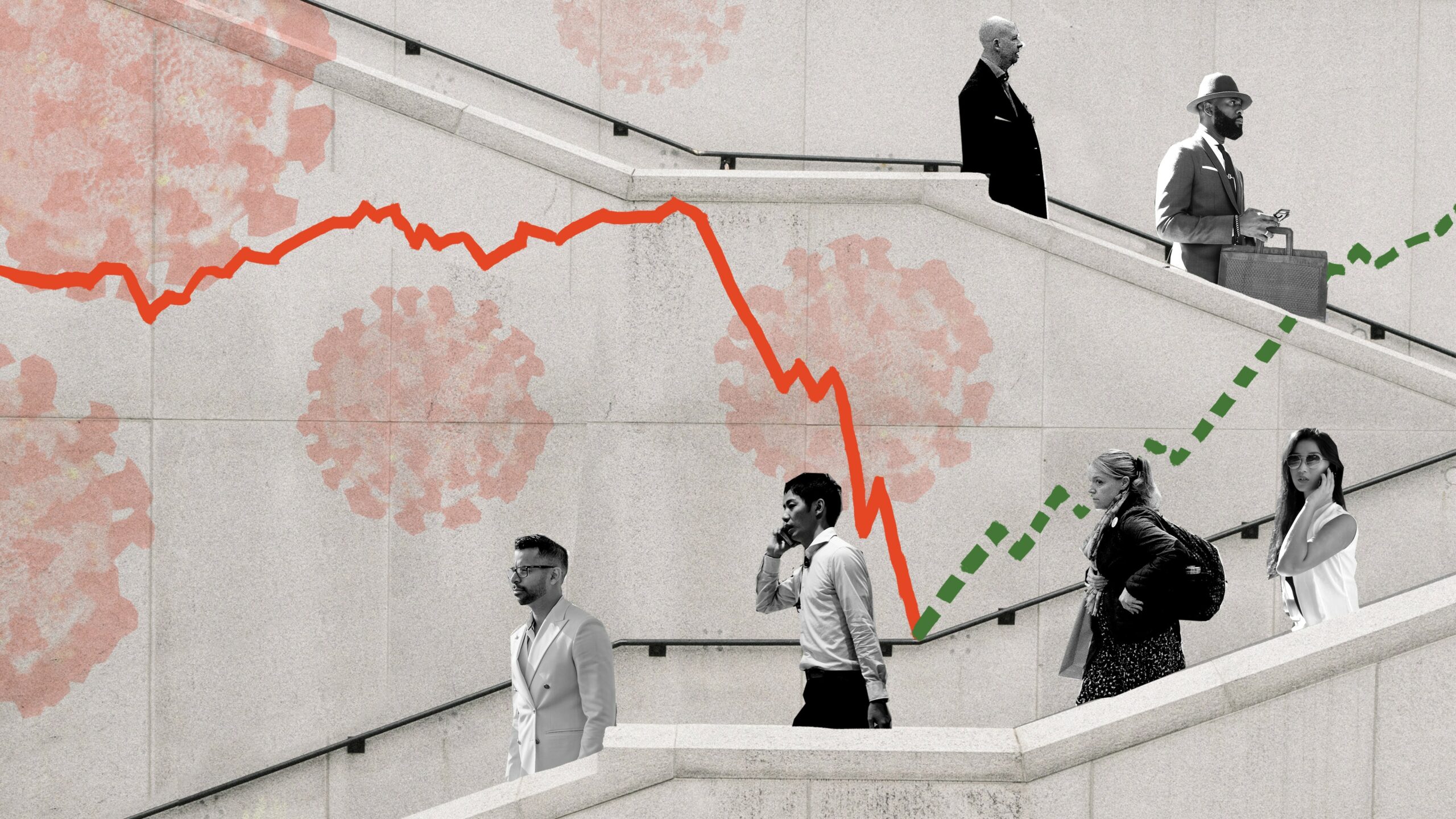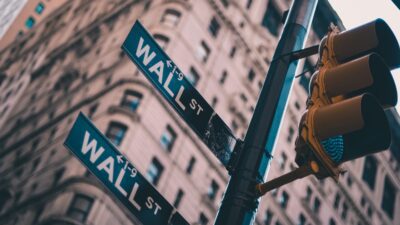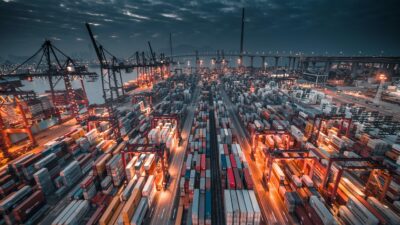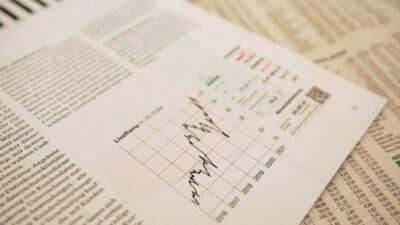Sandra Peter and Kai Riemer

Economic forecasting on Corona Business Insights
The disruption caused by the COVID-19 pandemic challenges economic forecasting as fundamental assumptions of economic models will have to be rethought.
As COVID-19 sets out to change the world forever, join Sandra Peter and Kai Riemer as they think about what’s to come in the future of business.
Shownotes
Even without a pandemic, economists aren’t especially good at predicting recessions
Why economic forecasting is so difficult during a pandemic
GDP forecasts tend to be most inaccurate just when they are most needed
Predictions of a second-half economic rebound are based on dubious assumptions
This episode is part of a podcast series covering what COVID-19 will mean for the business world, where we look at the impact on the economy, businesses, industries, workers and society. This is part of our ongoing coverage of the impact of COVID-19 on the future of business.
Follow the show on Apple Podcasts, Spotify, Overcast, Google Podcasts, Pocket Casts or wherever you get your podcasts. You can follow Sydney Business Insights on Flipboard, LinkedIn, Twitter and WeChat to keep updated with our latest insights.
Send us your news ideas to sbi@sydney.edu.au.
Dr Sandra Peter is the Director of Sydney Executive Plus and Associate Professor at the University of Sydney Business School. Her research and practice focuses on engaging with the future in productive ways, and the impact of emerging technologies on business and society.
Kai Riemer is Professor of Information Technology and Organisation, and Director of Sydney Executive Plus at the University of Sydney Business School. Kai's research interest is in Disruptive Technologies, Enterprise Social Media, Virtual Work, Collaborative Technologies and the Philosophy of Technology.
Share
We believe in open and honest access to knowledge. We use a Creative Commons Attribution NoDerivatives licence for our articles and podcasts, so you can republish them for free, online or in print.
Transcript
This transcript is the product of an artificial intelligence - human collaboration. Any mistakes are the human's fault. (Just saying. Accurately yours, AI)
Intro From the University of Sydney Business School, this is Sydney Business Insights.
Sandra And this is Corona Business Insights. I'm Sandra Peter.
Kai And I'm Kai Riemer.
Sandra And with everything that's happening, it's quite hard to understand what the COVID-19 will mean for the business world. So in this series, we've been looking at the economy, business, industry, government, at workers and society.
Kai And today we talk about why economic forecasting is so difficult in this pandemic.
Sandra Ever since the pandemic has started, we've seen a number of institutions and individuals trying to make predictions as to the economic impact of the pandemic, whether that has been around GDP forecasts or unemployment numbers. And we've seen massive differences in those projections. Early on, so going back to February, the differences were quite small with various institutions, including the OECD and organisations like Goldman Sachs made predictions that were still in the range of significant but controllable contraction in the economy. But by the end of April, these differences were quite massive. Some institutions saw, for instance, the US economy contracting by 8 percent, but some more pessimistic projections had this 65 percent contraction. That is a very, very wide spread. And whilst some institutions are now expecting a rebound in the third quarter of this year, others saw decline for the entire year and even into the beginning of next year. So we're ending up with very huge differences in economic growth, but also with stark differences in unemployment predictions and how those numbers will evolve.
Kai So that everyone can appreciate we live in very uncertain times and it shows in those projections. And just to be clear, those projections vary by a margin never seen before. Usually the projections by the kind of institutions that offer projections on the economy vary between 1 and 3 percent. Having them vary by over 50 percentage points is just massive. So we thought let's take a look at what is actually happening and why it is so difficult to make any economic projections at the moment.
Sandra There are two big categories of issues that we'll look at today. And one has to do with the data and how difficult it might be to get data to make these projections, what the actual data is and how indicators are built and what goes into that. The second big category is around the ways in which these models change and how the assumptions that are built into models that help us make this economic forecasts have been violated over the last few months and how difficult it is to understand how to replace them and what to replace them with.
Kai So first of all, let's look at where data usually comes from. A lot of data is collected by, for example, the Australian Bureau of Statistics or the US Bureau of Labor Statistics using household surveys where literally people are called up to go through a set of questions around their behaviour, their consumption, jobs and all of these kinds of things. So an article in Harvard Business Review, for example, makes the point that response rates to these surveys have fallen by about 10 percentage points, which means it's harder to reach people during this pandemic. And also, the kind of people who have the time to fill out surveys might actually introduce a certain bias or collecting data from surveys has become difficult. But the response rate is not the only problem.
Sandra It also matters what type of data we aggregate and what goes into it. So, for instance, if you have indicators that includes things like restaurant prices at the time when most or all of the restaurants are close, then indicators like consumer price inflation are not going to be a good representation of what is actually going on.
Kai We can appreciate that consumption has changed massively. Restaurants are closed, events are closed, theatres, sports, a lot of these things people don't spend any money on. Instead, people spend way more money on digital subscriptions and streaming services, on groceries, on e-commerce, retail. So there's now a complete shift in what people spend their money on, which skews how consumer price index, for example, or economic activity more generally are calculated.
Sandra And there is no certainty as to how these things will change. It might be that the money that we spend online keeps things at the high level for some time to come, and that is something that we need to build into our models. Or it might be that things slowly go back to normal and we see a return to our previous patterns of spending.
Kai But it's not just consumption related data. It's also employment data that is hard to calculate. We're now in a phase of uncertainty where a lot of people are unemployed or underemployed, but they don't count into the statistic, for example, because they are under furlough schemes such as JobKeeper. So they're not working, but they're not counted as unemployed, they receive benefits. So going forward, it is now uncertain what the actual employment figures might be and how and what to include in your modelling and predictions.
Sandra So let's look at those models and predictions, because most of these models, whether we're looking at GDP forecasting or unemployment, have certain assumptions that are built into how we calculate them. And during a pandemic like COVID-19, many of those assumptions are being violated. For instance, a simple assumption that's built into most economic models is that the purpose of economic interventions is to try to stave off recessions and to encourage economic activity. However, during the pandemic, many of the measures that governments have taken have been to close down the economy and thus stop economic activity, which is contrary to what many of these models assume.
Kai Also, normally policy interventions come with certain timelines. And we've seen during this pandemic that many jurisdictions have broad in place, quite sweeping measures in record time.
Sandra So, for instance, stimulus measures have been announced and then implemented very quickly with getting money into the hands of people much more quickly than at any other times.
Kai And while these measures are coming in fast because the economy has to be shut down fast, we have the lockdown, we want to keep people in jobs. So, JobKeeper in Australia came in really quickly. Not only do things sometimes go wrong, it is also not clear for how long these measures will be in place.
Sandra Which also takes us to another assumption that needs to be made in these models, and that has to do with how effective public health interventions are. So, for instance, how effective is a lockdown, how long the lockdown will take, whether or not we will return to normal activity sooner rather than later? Will there be a second wave of the pandemic? Will there be a vaccine? How the health care systems will respond. All of these assume economists making assessments or predictions about the future trajectory of the pandemic. And of course, these are health related predictions and not economic predictions, which most economists do not have expertise in and need to rely then on other experts making their own predictions.
Kai So economists all of a sudden have to engage in epidemiological forecasting to feed this into their models. Which brings us back to timelines, because under normal circumstances, very similar macroeconomic models can be used in different countries, whereas now many countries are on different timelines. We see very different pandemic curves in the US, for example, compared to Europe or indeed Australia, where we are at the cusp of opening up the economy with very low case numbers. The costs for the health system is very different to what it is in the US, for example. So all of this makes the modelling itself much more difficult for economists.
Sandra And all of this takes us to the bigger problem that many of our models might actually be based on assumptions that from now on won't be true. So we will need to adjust the models themselves. However, the difficulty with that is that we don't actually know in what ways our models are wrong or what the new assumptions are. Whilst all forecasters pretty much agree that things will change and there will be a lot of pain going forward. There is very little agreement about what fundamentals in those models need to change, when, and for how long.
Kai Which in turn explains the large discrepancies in what forecasters come up with. As the world changes, as this disruption occurs, which breaks with some of the base assumptions that might have held true so far and that all economists agreed on, as some of these assumptions are being violated, new assumptions have to be brought in place in depending on what assumptions one makes the outcome of the modelling going forward might deviate quite widely.
Sandra And if we look at economic predictions historically, we know, for instance, that economic forecasts tend to be most inaccurate in times of crisis or actually when they are needed most then will add an article in the shownotes from the Financial Times that actually looks at GDP predictions from 1992 until 2018 for all major economies and actually shows that there are huge surprises in times of recession. So, for instance, around 9/11 or during the 2010 the financial crisis, but also interestingly, there are fairly prolonged periods when the surprises all tend to be in the same direction. And this actually happens when the growth of the economy changes for supply side reasons. So, for instance, when productivity grew in the 1990s after the tech boom, there was a repeated tendency to under estimate how much the economy will grow. There was this repeated then the sip on the estimated year after year because we failed to understand how the assumptions of the models have changed. In this case, it was how technology had changed productivity and how productivity would grow on the back of technological changes, which points to the general issue with disruptive change.
Kai And this can be a slow boil disruption, like when technological changes rewrite the rules of entire industries and lead to either quantum leaps in productivity or the emergence of new kinds of activities such as online trade, e-commerce, working from home. These kinds of things, or indeed the kind of disruptions that are brought about by these events that we see now, which operate on a very compressed timeline which aggravates the problem. So while in technological change we have these prolonged periods where forecasting is wrong, now all bets are off, the period is much compressed and we have to reset some of those economic models. So what economists are doing now is they're not working inside their models and trying to find the best data to forecast. They actually have to actively engaged with the changes in the world and rebuild their models so that forecasting going forward can work again. And that's what makes it so challenging.
Sandra And because every disruption is unique, hence disruption. The last time we faced a huge crisis, which was the financial crisis, has very little to teach us about what this time is a public health crisis.
Kai And this is why we will have to come back to this topic down the track.
Sandra And this is where we'll leave you today. As always, we will put all the links in the show notes.
Kai Until next time. This was Corona Business Insights.
Sandra Thanks for listening.
Kai Thanks for listening.
Outro From the University of Sydney Business School, this is Sydney Business Insights, the podcast that explores the future of business.
Close transcript







